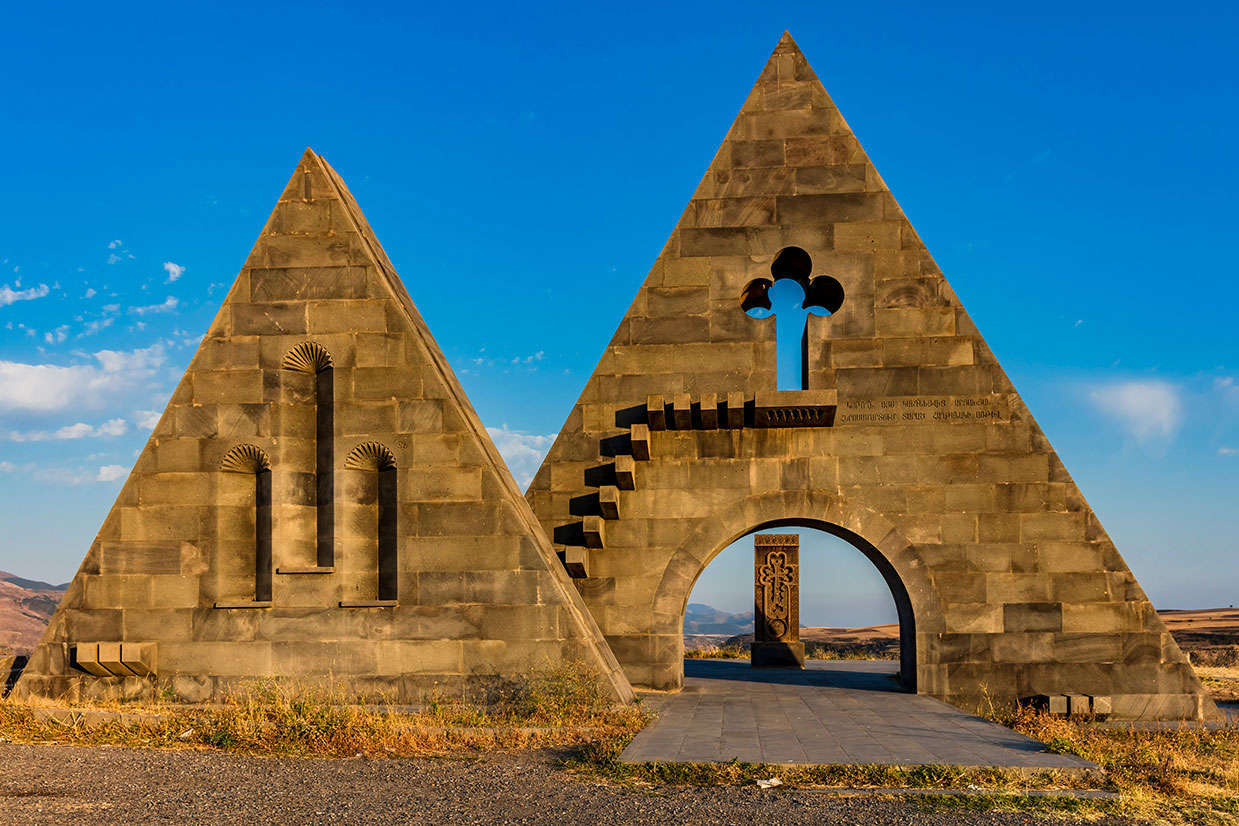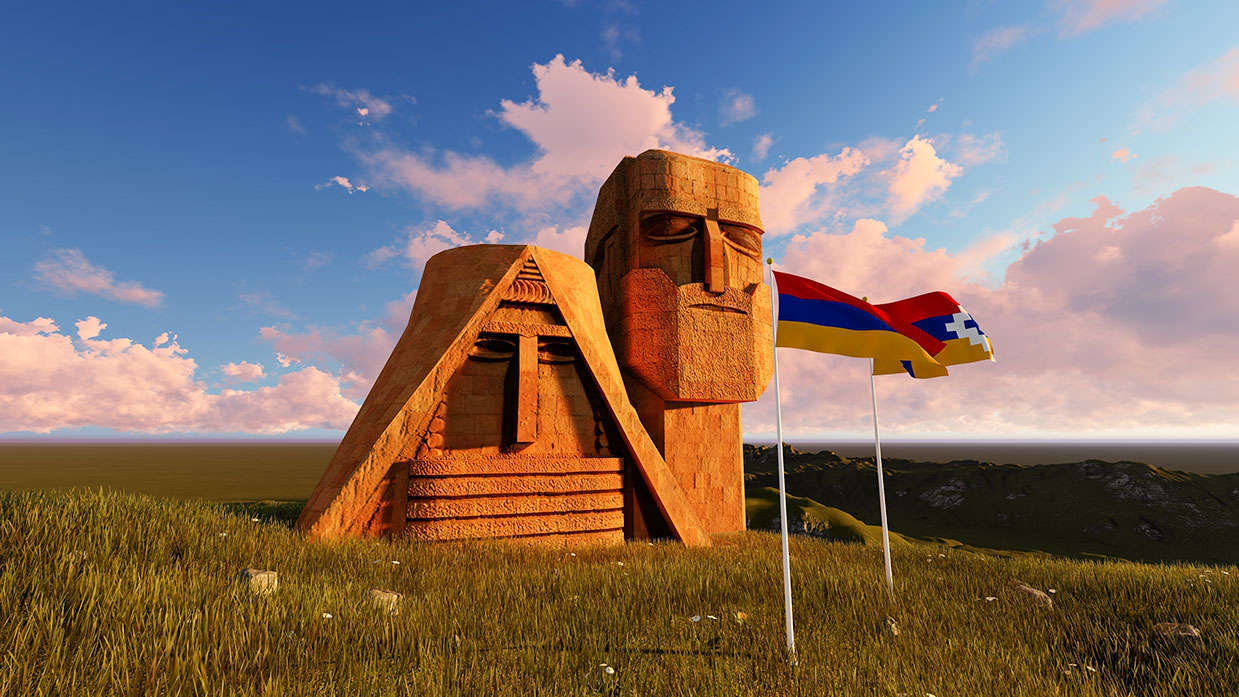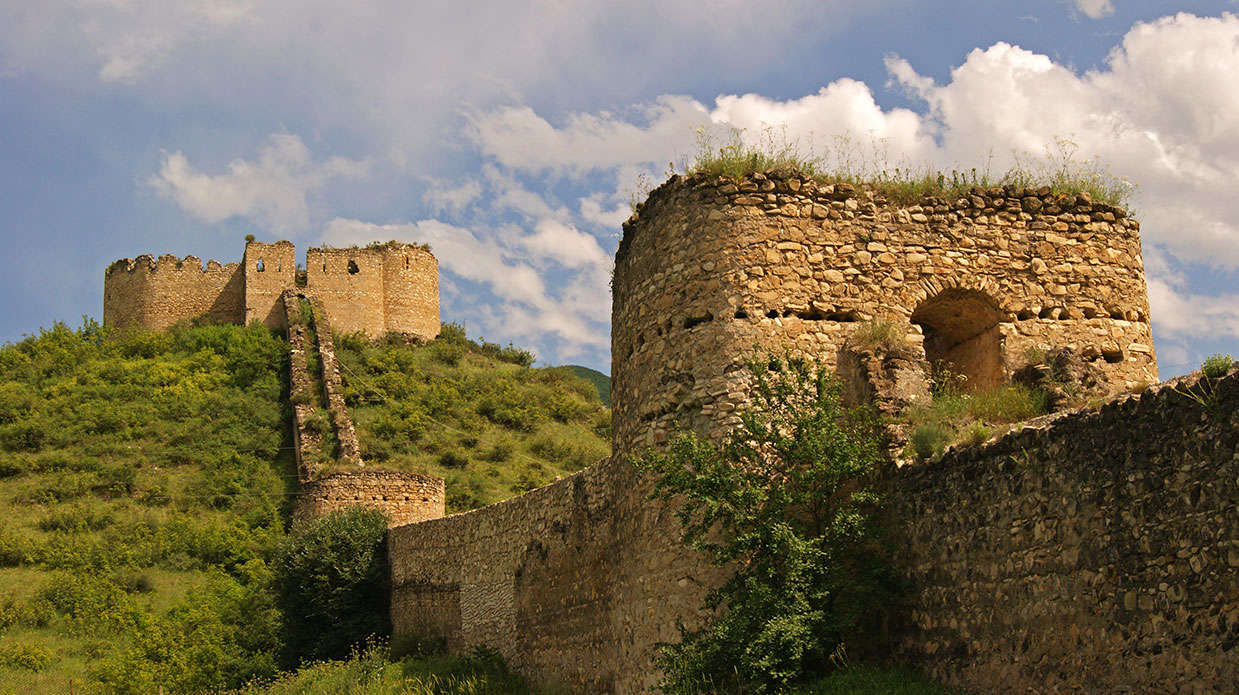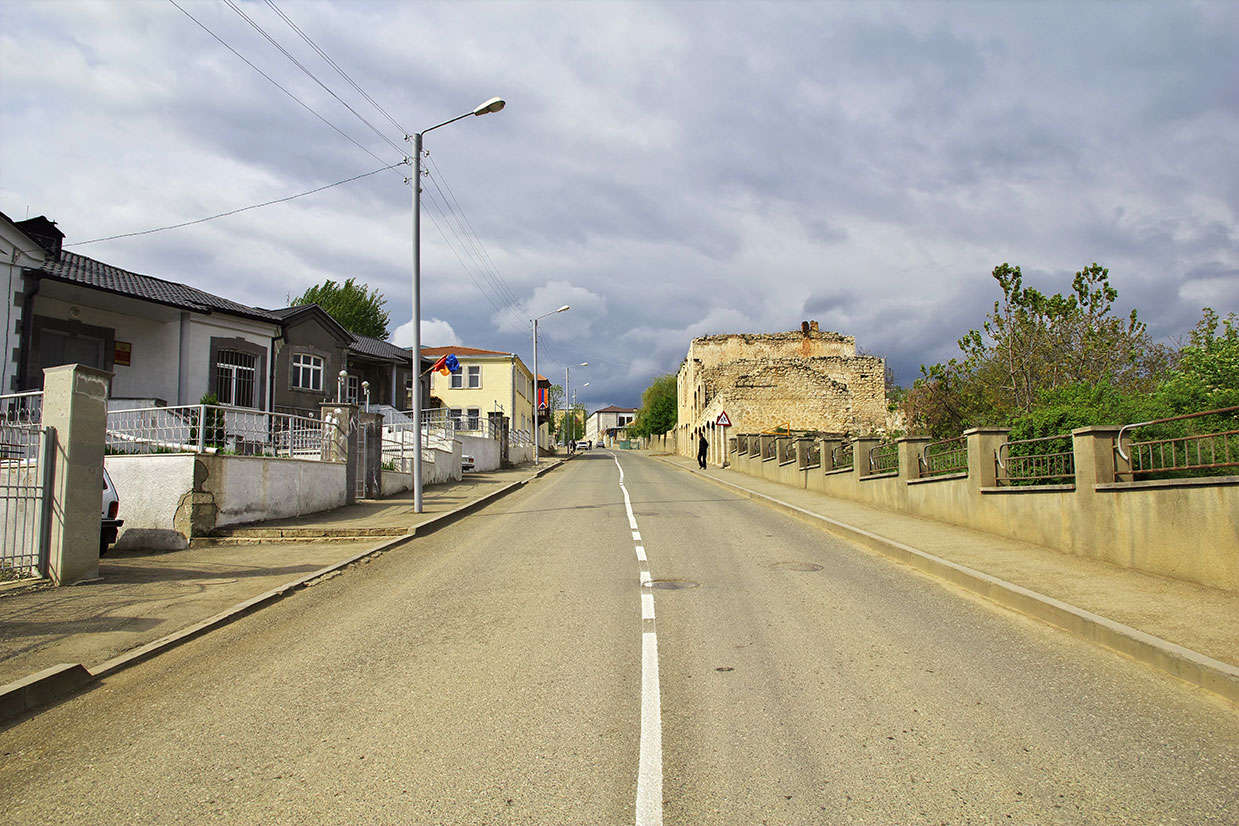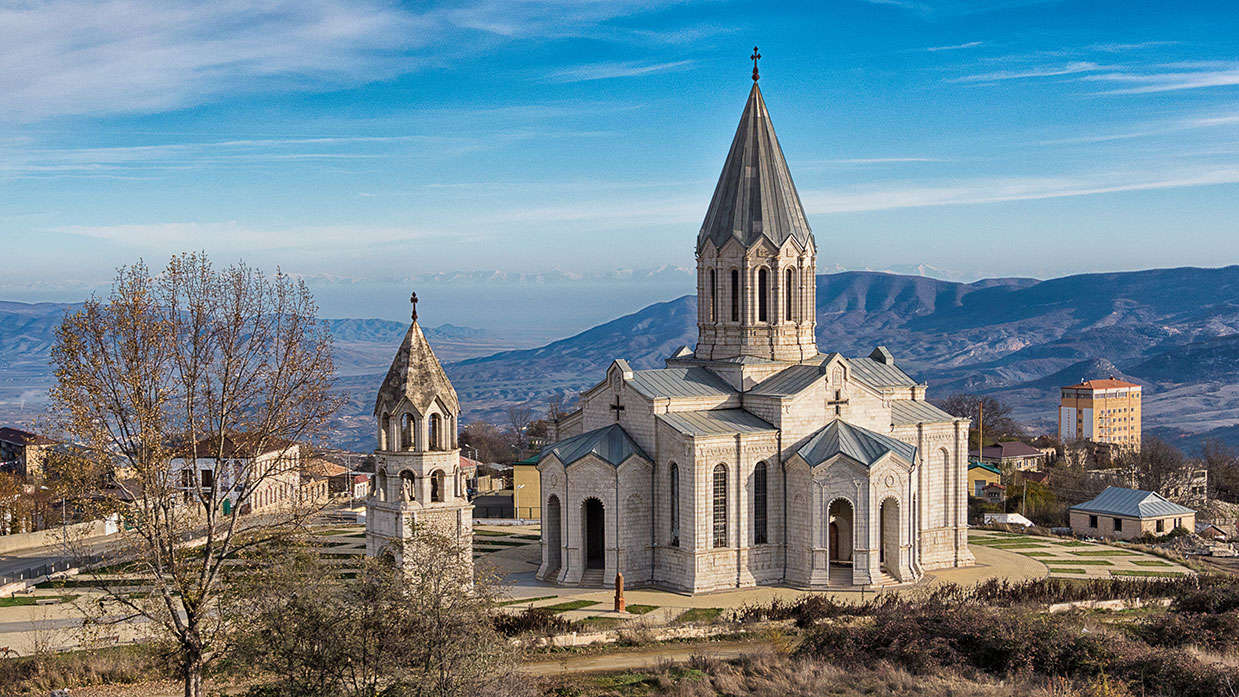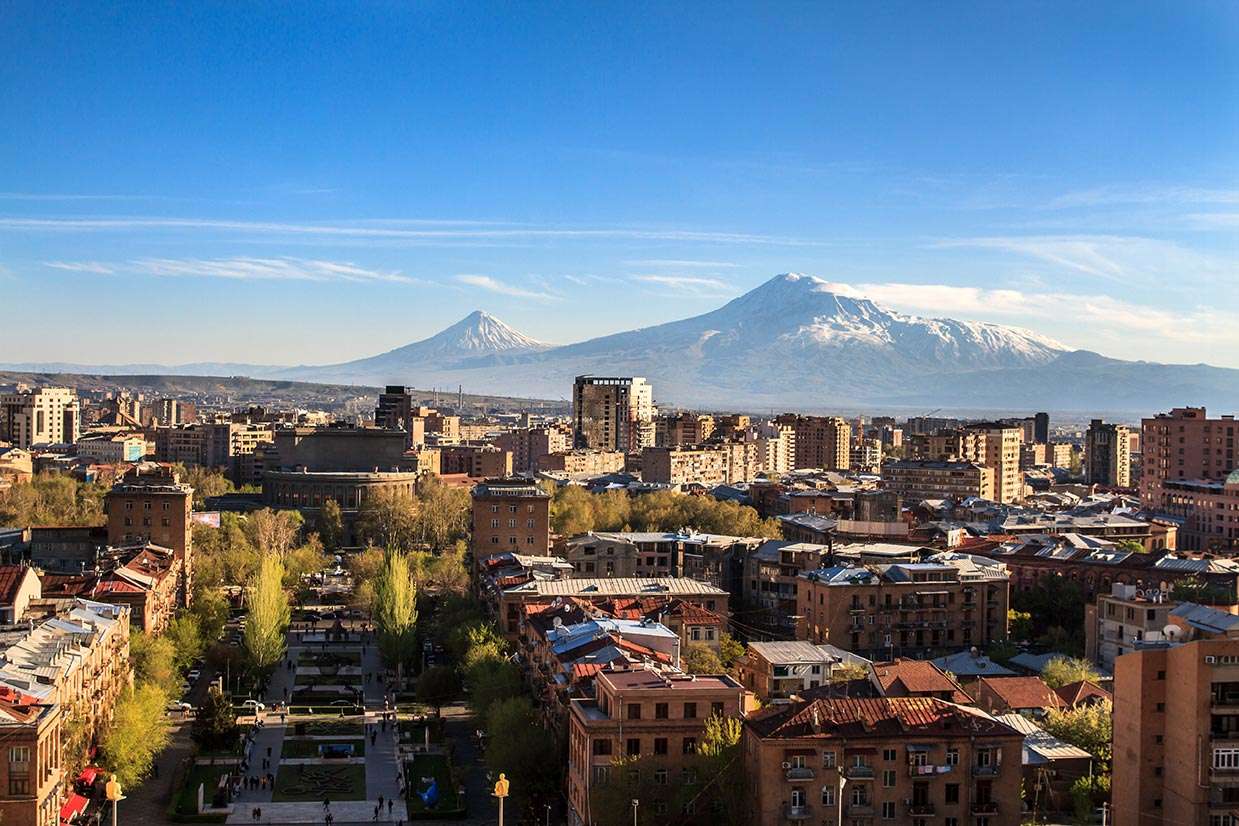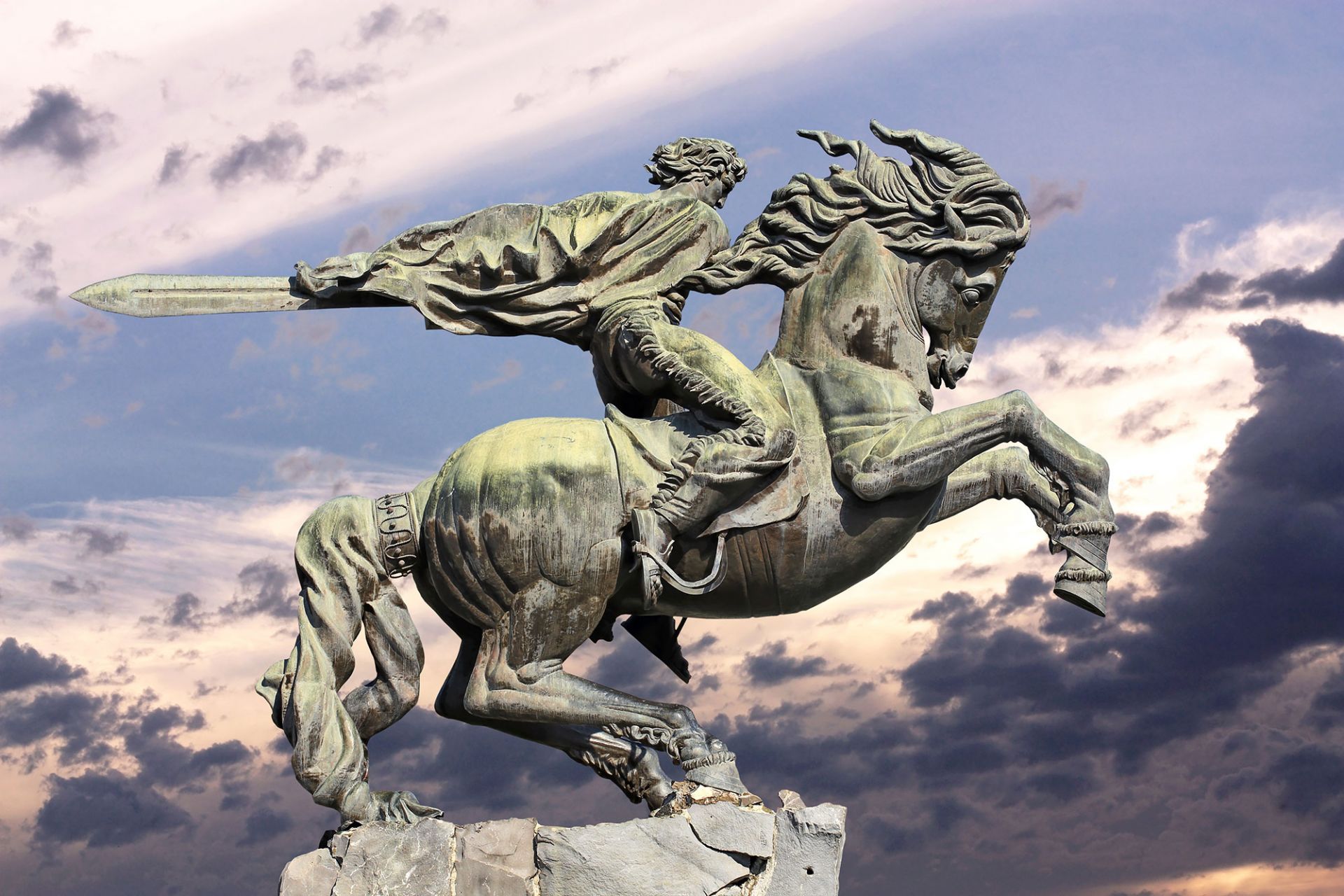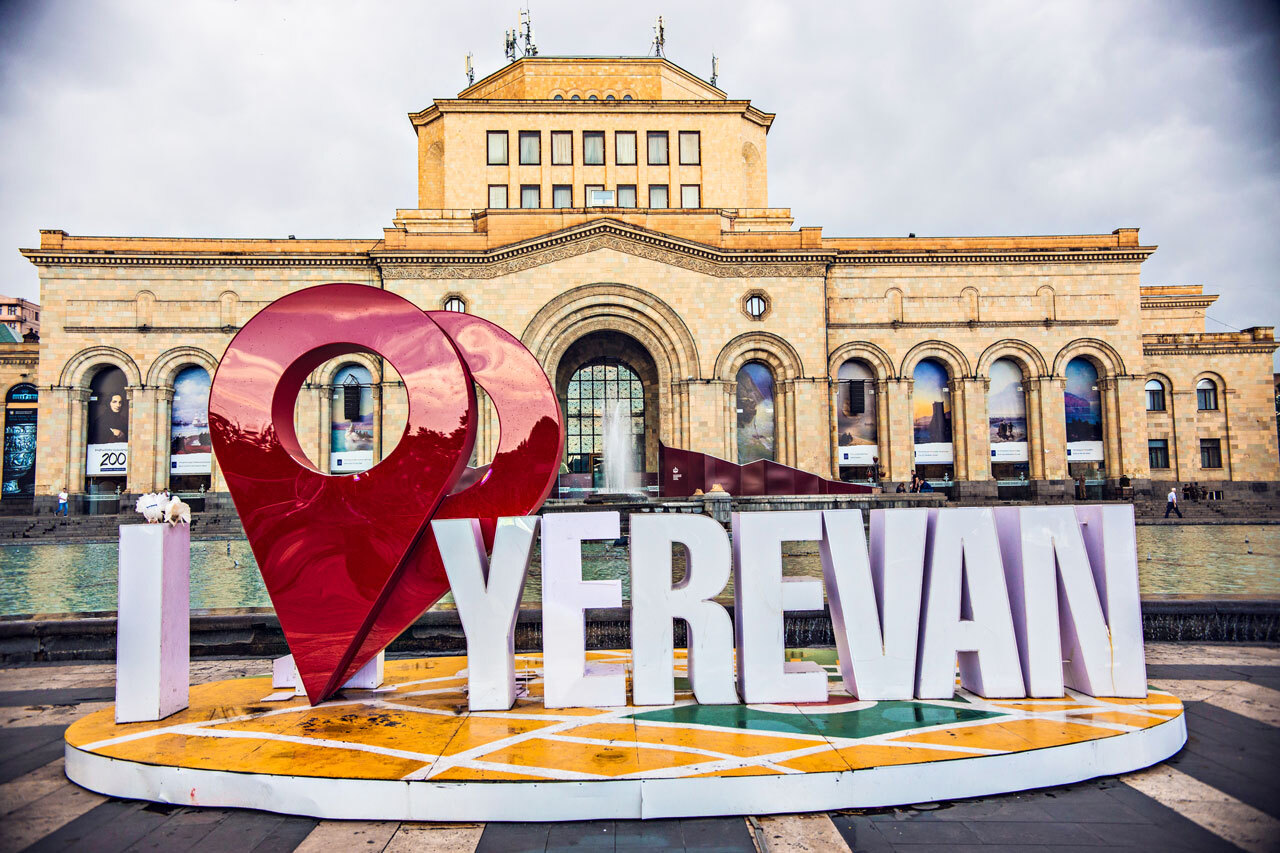Artsakh
The area stretches from the surrounding mountains of the Lake Sevan to the east to the River Araks. Nagorno Karabakh or Artsakh has been called by a variety of names in each historical epoch, which always caused confusion: Urtekhe-Urtekhini, Orkhistene, Artsakh, Tsavdek, Khachen, and Karabakh. In the middle of the 1st century BC, Armenia became the most powerful state in this part of Asia. The Armenian King Tigran the Great paid special attention to Artsakh and founded the city Tigranakert there. It was one of the four cities that bore his name. The ruins of the city, the mighty stone blocks, can still be explored near the present-day town of Aghdam. At the beginning of the 4th century AD, Christianity was adopted in Artsakh. The invention of the Armenian alphabet led to an unprecedented upswing of culture both in Armenia and in Artsakh. The founder of Armenian letters Mesrop Mashtots established the first Armenian school in the monastery of Amaras in Artsakh. In the 5th century, the eastern part of Armenia, including Artsakh, was under Persian rule. In 451, a bloody battle in Armenia occurred, which was known in the history as the The Battle of Avarayr (Vartanants)".
In the 7th and 8th centuries, a unique Christian culture was developed here. At that time, the monasteries of Amaras, Orek, Djrvshtik, and others were expanded into powerful bastions of faith and spirit. Artsakh began to flourish at the end of the 12th century and during the first half of the 13th century. It was a period of economic and cultural growth. Valuable architectural ensembles such as Surp Hovhannes Mkrtich (John the Baptist) Church, the complex Gandzasar Monastery (1216-1260), Dadivank Monastery Cathedral (1214), and Gtichavank Cathedral (1241-1248) were built. All of these churches continue to be regarded as masterpieces of Armenian architecture.
The capital of the country is Stepanakert. The most significant architectural monument of the city is called "Grandma and Grandpa" which rises on the hill. The unusual monument is dedicated to the old people and is carved in the form of an old couple. The square Veratsnund is situated in the centre of the city, where the majority of the administrative buildings are located. The beautiful avenue of lovers leads from the centre to the stadium. Travellers can find accommodation in one of the city's 5 hotels. The city has a theatre, a library and other places of interest.
Stepanakert, as a settlement, originated at the beginning of the XIX century, in the place of the village Vararakn, in the territory of today's city. The city is located on the eastern slopes of the Artsakh Mountain Range, on the left bank of the Karkar-Vararakn tributary, at about 850m above sea level. The first city map of Stepanakert (1926) was drawn by Alexander Tamanyan. Stepanakert is the largest city and has 54.500 inhabitants (2013). As a settlement, it has been known since 1847 - until that time it had been famous as an Armenian settlement called Vararakn, which had more than 2000 years of history. The Armenian dramatic theatre plays a major role in the cultural life of the city, which bears the name of V. Papasyan (founded in 1932). During the Azerbaijani rule, all performances on the history of the Armenian people were removed from the schedule. From the shield of the theatre, even the word 'Armenian' was removed. Although the majority of the people living in Stepanakert belonged to the Armenian Apostolic Church during the Soviet times, it did not have its own church until 2007. Saint George’s Church (Surp Kevork), which was built at the end of the 19th century, was demolished by Stalin in the 1930s. On the northern edge of the town near the military cemetery, there is a small medieval church called Vararakn (English: 'Fast flowing stream') built on a piece of private land that has not been used for a long time. It bears the same name as the old Armenian village, where the Soviet city of Stepanakert was founded. On 9 May 2007, at the 15th anniversary of the liberation of Shushi, Saint Hakob’s Church (Surp Hakob) was opened. The church was founded due to the donations of patron Nerses Yepremian from Los Angeles. The construction of the Cathedral of the Holy Mother of God began in 2006 and finished in April, 2019. The trip to Artsakh allows tourists to travel through ancient and modern times.
